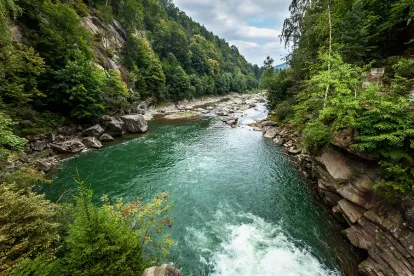Yesterday, President Trump issued an executive order (Order) that will scale back the U.S. Environmental Protection Agency’s (EPA) and U.S. Army Corps of Engineers’ (Corps) hotly contested “waters of the United States” (WOTUS) rule. The Order instructs EPA and the Corps to balance the interests between protecting waters from pollution and promoting economic growth, while respecting the States’ role under the Constitution.
With this policy in mind, the EPA and the Corps are to issue a proposed rule that will either rescind the current WOTUS rule, or issue a revised rule. Any revised rule is expected to align with the positions taken by Scott Pruitt, the recently confirmed EPA Administrator, 31 states, as well as many local governments and private industries including agriculture, real estate, manufacturing, oil and gas recovery, and utilities, with respect to which waters should be regulated as “waters of the United States.” It is anticipated that environmental groups are likely to oppose the order, and any changes to the existing rule.
The WOTUS Rule’s Choppy History
The EPA and the Corps issued the controversial revised definition of the WOTUS rule in May 2015. Many believe that the revised definition drastically expanded the number and types of waters, subject to regulation under the federal Clean Water Act (CWA); while the EPA, under the Obama Administration, stated that a very small number of additional waters (3.27%) would be included in WOTUS.
The uncertainty over the definition of “waters of the United States” under the CWA has been an issue for decades, prompting litigation and public demand for clarification and certainty. The U.S. Supreme Court addressed this issue in a series of cases with shifting WOTUS definitions: United States v. Riverside Bayview Homes, Inc., Solid Waste Agency of Northern Cook County v. Army Corps of Engineers, and Rapanos v. United States. Unfortunately, these decisions only led to further ambiguity over the WOTUS definition.
The EPA and the Corps published a guidance document, in 2008, in an attempt to clarify the approach to regulating “waters of the United States” using a case-by-case test found in Justice Kennedy’s Rapanos concurrence. The regulated community opposed the subjective standard, which compelled the agencies to issue another draft guidance document, in 2011. The 2011 guidance document spurred significant public comment and opposition and was ultimately withdrawn.
In developing the WOTUS rule, EPA and the Corps had two stated goals: 1) to protect water supplies and wetland habitats, and 2) to seek to clarify the definition, by minimizing the circumstances under which a case-by-case evaluation would be necessary. However, in attempting to achieve its stated goals, the EPA expanded the scope of the rule and the extent of federal jurisdictional waters.
The Sixth Circuit Weighs In
The issuance of the final WOTUS rule in May 2015 stimulated litigation across the country and prompted action in multiple courts. In October 2015, the United States Court of Appeals for the Sixth Circuit issued a nationwide stay of the WOTUS rule, pending a determination of whether that court had jurisdiction to determine the rule’s validity. The stay of the rule remains in place, and on January 13, 2017, the U.S. Supreme Court agreed to hear arguments as to the jurisdictional issue, as early as this spring. While the rule has been stayed, the pre-WOTUS rule definition of “waters of the United States” has remained in effect. President Trump’s executive order will likely put an end to the current litigation, while, at the same time, spurring legal challenges of its own.
Content of the Executive Order
In the past, President Trump has criticized the WOTUS rule as an overreach of government authority and as a hindrance to economic development. President Trump’s criticisms of the 2015 WOTUS rule maintain that the WOTUS rule would require numerous parties to obtain federal permission and potentially pay high costs in mitigation fees before impacting federal jurisdictional wetlands or waters. President Trump’s executive order instructs the EPA and Corps to review the 2015 WOTUS rule and to rescind or revise the rule to narrow federal jurisdiction and limit those waters that require permitting and agency action.
The executive order explicitly states that the EPA and Corps should consider “interpreting the term ‘navigable waters’… in a manner consistent with the opinion of Justice Antonin Scalia in Rapanos.” Where Justice Kennedy’s approach is seen to have broadened the scope of covered waters, Justice Scalia’s approach in Rapanos narrowed the scope, and called for the WOTUS rule to authorize federal jurisdiction over only permanent, standing, or continuously flowing bodies of water such as streams, oceans, rivers, and lakes. Application of Justice Scalia’s approach would narrow the scope of the waters that are subject to federal jurisdiction, as compared with the 2015 WOTUS rule.
Who Will the Executive Order Impact?
As anticipated, the Order instructs the EPA and the Corps to narrow the scope of federal jurisdiction over navigable waters. Environmental groups are likely to oppose this shift and are expected to react through litigation - both of rules and to challenge projects that will impact waters and wetlands. Many industries will benefit from the Order, which will halt the expansion of federal jurisdiction and relieve industry of the resource intensive requirement of obtaining federal permits for impacts to non-permanent waters.
From a practical perspective, the pre-WOTUS rule is likely to remain in effect until the EPA and the Corps propose a new one. In the near term, the pre-WOTUS rule gives the EPA and the Corps broad authority to require permitting and fees for impacts to a vast spectrum of waters, on a case-by-case basis, which continues to be a time consuming and resource intensive effort. Ultimately, President Trump’s Order mandates that the EPA and the Corps narrow the scope of waters, subject to federal jurisdiction, and eliminate as much case-by-case decision making as possible.





 />i
/>i

